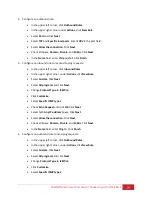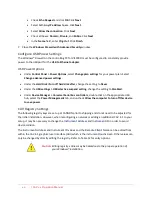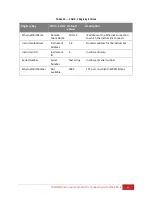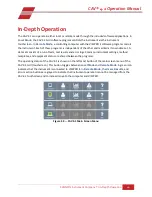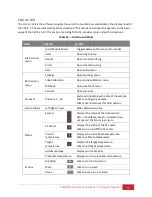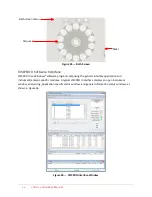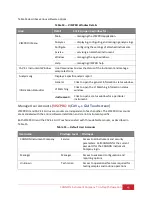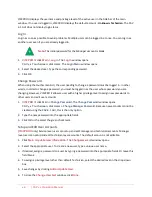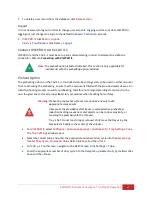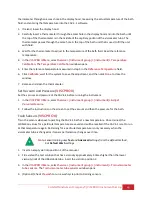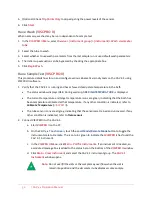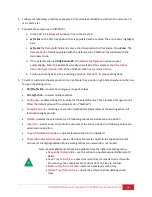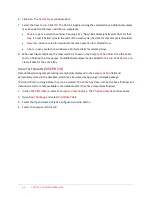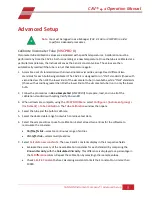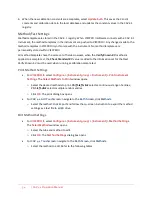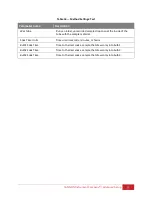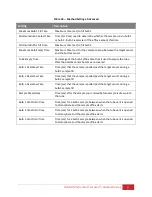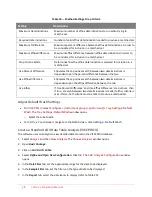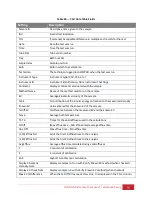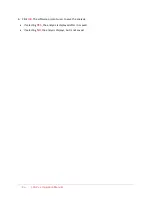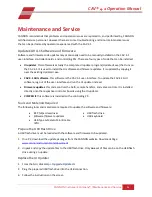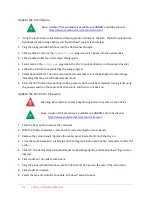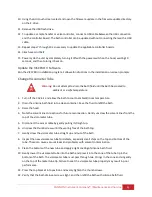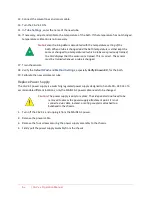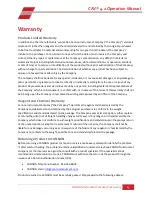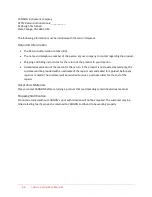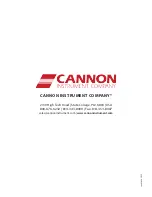
CANNON Instrument Company® | Advanced Setup
53
CAV® 4.1 Operation Manual
Advanced Setup
Note:
You must be logged in as a Manager (CAV 4.1 GUI or VISCPRO) in order
to perform advanced procedures.
Calibrate Viscometer Tube (
VISCPRO II
)
Viscometer tube calibration values are associated with specific temperatures. A calibration must be
performed any time the CAV 4.1 bath is operating at a new temperature. Once the tube is calibrated at a
particular temperature, the instrument saves the C and E constant values. The values are then
automatically recalled if the tube is run at that temperature again.
1.
Assemble a set of standard oils with known kinematic viscosities, using at least different two
standards for each bulb being calibrated. The CAV 4.1 is designed to run "thin" standards (those with
viscosities less than 10X the lower limit of the viscometer tube) in two bulbs, while "thick" standards
(those with viscosities greater than 10x the lower limit of the viscometer tube) run in only the lower
bulb.
2.
to prepare, load, and run all of the
calibration standards with setting
Verify Known KV
.
3.
When all tests are complete, using the
VISCPRO II Menu
selec
t Configure
>
[instrument group] >
[instrument]
>
Tube Calibration
. The
Tube Calibration
window then opens.
4.
Select the tube and the bulb to calibrate.
5.
Select the desired date range from which to retrieve test data.
6.
Select the sample entries to use for calibration. Select at least two entries for the software to
recalculate the constants.
•
Shift-left-click
—selects a continuous range of entries.
•
Ctrl-left-click
—selects multiple entries.
7.
Select
Calculate new constants
. The new C and E constants display in their respective fields.
•
Evaluate the accuracy of the new calibration constants for each standard by comparing the
Known Viscosity
with the
Calculated Viscosity
. This difference is displayed as a percentage in
the
% Difference
column. Repeat the calibration by selecting other sample entries.
•
Check
Limit E Constant
before calculating constants to limit the E constant to no more than
10000.

